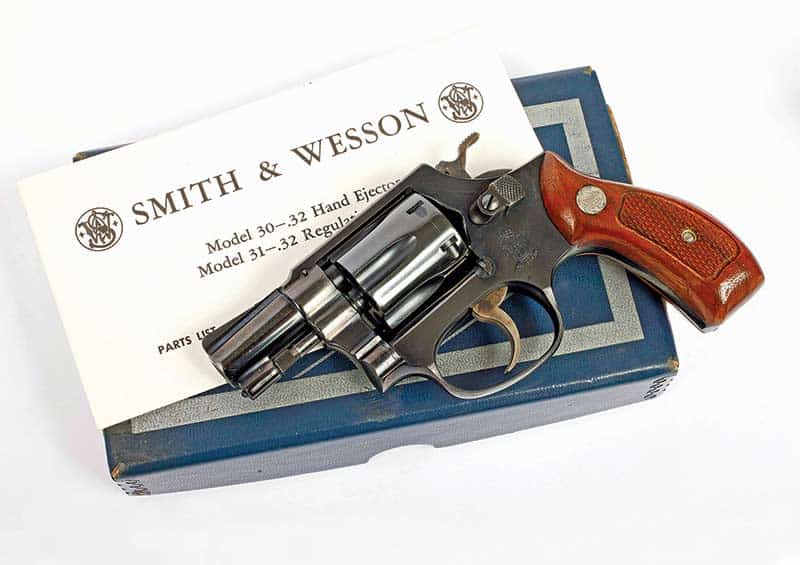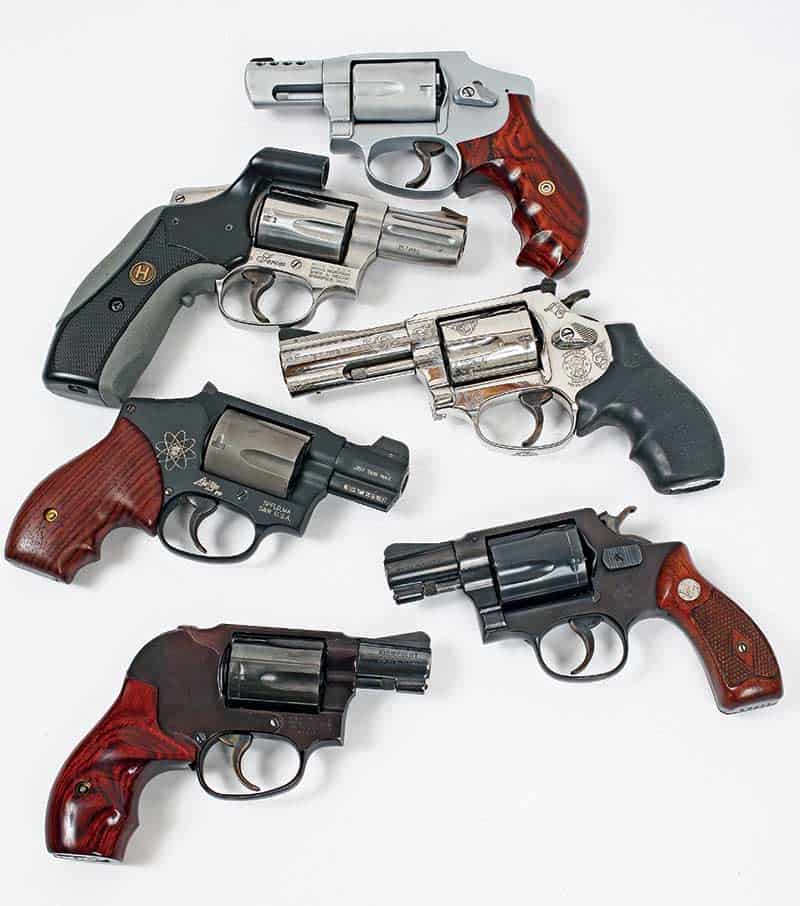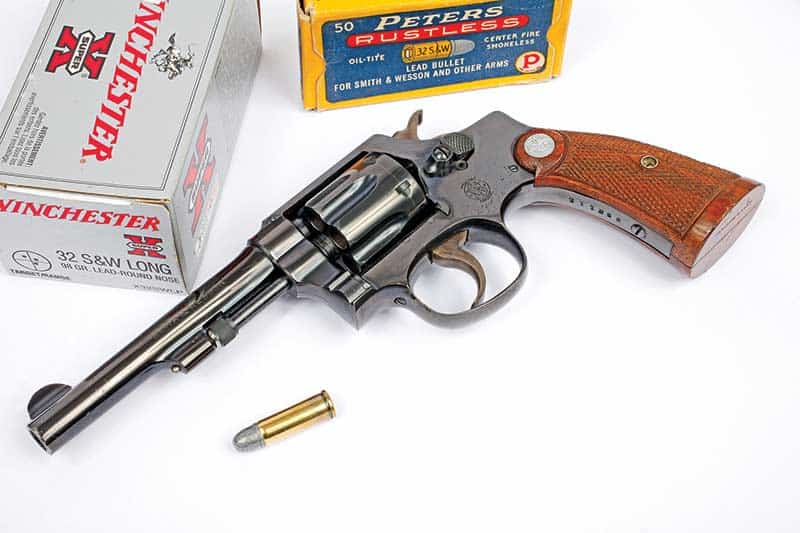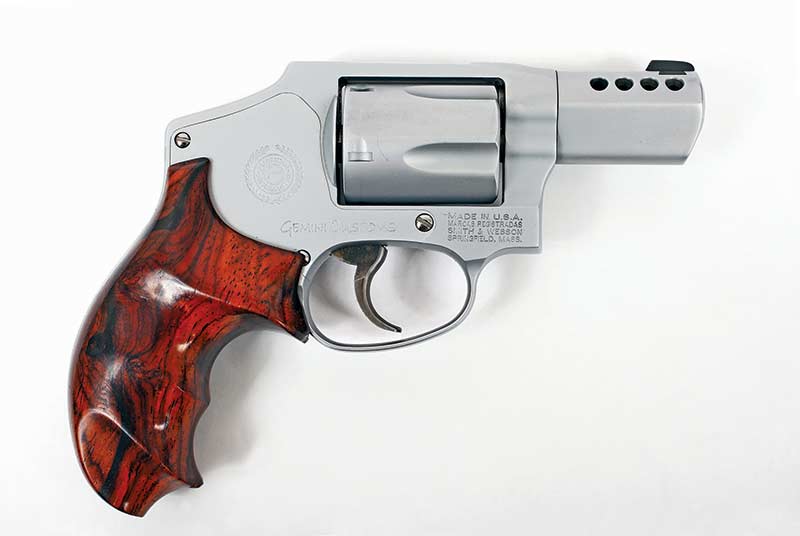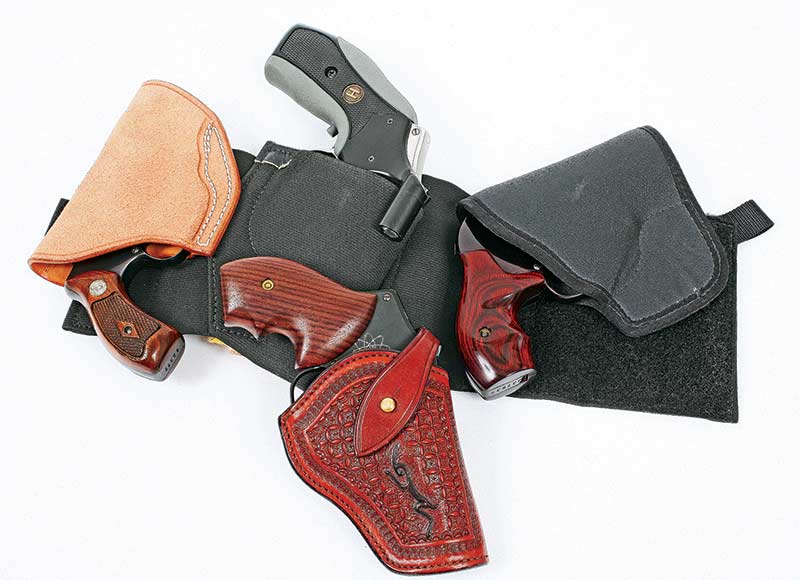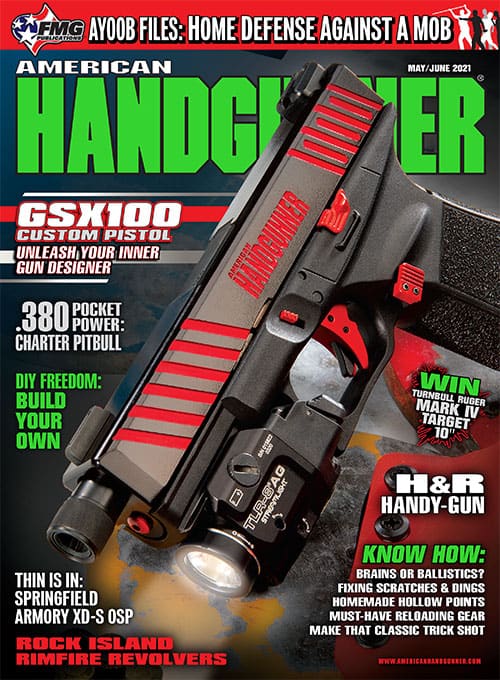J-Frame Gems
S&W Nails It — Circa 1950
In 1894 S&W craftsmen-artists introduced the “Hand-Ejector” series of revolvers, assuring their places in wheelgun history. The first gun evolved into the “K-Frame” but of course the M-Frame, I-Frame, the famous N-Frame and L-Frame also owe their appearances to the same original design.
But the “hidden in plain sight” jewel of the mix is the enduring J-Frame. If we mention it in our pages, reader mail always lights right up full of stories of their own J-Frames. Seems when S&W imagineered the J-Frame they scored big — especially because it was pretty much spot-on right out of the gate. But how’d they get from the original 19th Century odd Hand-Ejector design to the nearly “perfect” J-Frame?
In 1949, S&W president Karl Hellstrom — the first non-family member to be president — put out the word to the gang there to update the I-Frame from the creaky turn-of-the-century design it was, to something more modern. Designers went to work and sometime late in 1950, the “new” J-Frame was born.
The International Association of Chiefs of Police convention was held and S&W introduced the new little gun there. They held a “name this gun” competition and “.38 Chief’s Special” was selected as the grand prize winner. But being how things usually go, the .38 Special part was soon dropped and the classic “Chief’s Special” name was born.
That First Design
The original was a blue steel, round butt, 5-shot, fixed sight revolver with a 2″ barrel. I’m blessed to have a minty sample made late in 1953, just a couple of years after it was introduced. The distinctive flat cylinder release and “5-screw” build (four side-plate screws and the cylinder bolt plunger screw on the front of the trigger guard) shows it’s an older gun. There’s also a distinctive sort of slightly frosty bluing rather than the more “black” of modern guns. It’s simply beautiful in the right light.
That first model was followed with a 3″ version and a square butt since some complained about recoil from the 158-grain RNL ammo of the time. Adjustable sights enhanced things around ’55 and in ’57 an aluminum-framed (Airweight, or Model 37) version was introduced. Around the same time the “Model 36” moniker was stuck to the steel version since S&W was beginning to assign model numbers to some guns. The 1950s were busy for the model, as the Bodyguard with the hammer shroud was also introduced as an airweight.
In 1952, S&W celebrated their centennial and lo and behold, a version of the J-Frame was made to commemorate the event. The “Centennial” had a genuinely concealed hammer and unique grip safety to boot.
More Changes
Around 1961 S&W dropped the ancient I-Frame and from then on, that .32 S&W Long version was made as a J-Frame. The .32s are all 6-shot guns and if you find one, loaded with a modern .32 load from the likes of Buffalo Bore turns it into a dandy personal gun. I had one and it was comforting to have six rather than five shots in the tiny package.
The gun industry was taking a hard look at stainless steel in the 1960s and in ’65, S&W really got everyone’s attention by introducing the J-Frame in .38 Special as an all-stainless steel revolver. Called the Model 60, it rocked the industry and was pretty much sold out constantly.
The first models were highly polished, looking more like nickel, but when cops started to complain about how flashy (literally) they were, S&W changed to a more subdued polish, remaining today.
The general design and feature-set of that original J-Frame continues, and S&W has introduced a long line of models based on the design. Highlights include the various .357 Magnum Scandium lightweight guns, a 5″ barrel with adjustable sights — which was a very cool gun and supremely accurate — and even an all-aluminum .22 weighing just 10 oz. We’ve also been blessed with various models in .22 LR and even .22 Magnum, in both aluminum and steel versions.
About 15 years ago, I attended an S&W event at Gunsite and begged them to bring “A bunch of J-Frames for us to play with please!” They did, and as I recall we had something like 36 different models to shoot, and that wasn’t even close to the total number of different SKUs they made at the time. By combining different finishes, sights, grips, alloys, barrel lengths and contours, build designs, limited runs, special editions, etc. there must be thousands of different combinations possible.
Sometimes, though, names get confusing. A modern rendition of the “Bodyguard” has a unique sort of “top” cylinder release along with a laser. The design isn’t the same as the more classic version of the Bodyguard and I’m not sure why S&W didn’t just come up with a new name. Bring it up among J-Frame aficionados and be prepared for a loud “discussion” concerning the pros and cons.
Considerations
S&W has made so many models you can usually find a J-Frame of one sort or another pretty affordable. They’re not only practical for defensive use, but unlike what many think are exceptionally accurate. It’s possible to ding a 200-yard steel silhouette with one once you get the range, and I’ve consistently kept groups on an 8″ paper plate at 100 yards. Taking your time from a rest, it’s possible to manage 1.5″ groups at 20 yards once you get yourself settled and pay very close attention to trigger press. Most who think the guns are inaccurate simply don’t know how to shoot them properly.
Round butt or square butt? For shootability, the square butt wins, but for pocket carry especially, the square butt does tend to poke out. Airweight or steel frames? I’ll be the first to admit the airweight guns are pretty snappy when it comes to recoil but are a delight to carry. I vote for both. Shoot the heck out of steel ones and carry the lighter ones. The aluminum ones are more sensitive to being worn out with a steady diet of duty loads, so go easy on them. The Scandium-based ones seem to be able to outlive their owners though.
The traditional latch on the side seems to fall under my hands more easily than the odd location on the top/rear (behind the sight) of the newer “Bodyguard.” But your results may vary. For ammo, I tend to favor a lighter bullet like the Black Hills HoneyBadger over something heavier due to recoil.
Should you buy a J-Frame or a 9mm sub-compact? That’s a toughie. I’ve never felt unarmed with a J-Frame in a pocket and you won’t either. I think if you’re experienced and practice, you’d be fine with the auto. If you’re not going to practice and will tend to “load it and forget it” get the revolver as it’s simpler and has a less complicated manual of arms to operate it. But it’s difficult to shoot well, so keep that in mind too.
And, as odd as it may sound, keep in mind a Centennial or Bodyguard (with protected hammers) can be fired from within a coat pocket in a pinch. We did some testing and indeed, sometimes an auto would jam-up. If you insist on trying it yourself just keep your head screwed on straight and be safe.
If you already have one of these nifty little revolvers, dust it off and go shoot it. Don’t let it slowly rust away in a drawer or become yet another safe queen! They deserve to be enjoyed.
For more info: Smith-Wesson.com; Hyskore.com; TheWilderness.com
Mini- Model 92
Hampton Weaver has done it again with another spectacular miniature in their line-up. This one has great detail, like the others, and is made of hefty hard zinc then silver plated and oxidized to make the details pop. At about 21/8″ it’s big enough for you to enjoy those details too. It comes in this tidy high quality box, and at only $21.95 I think these are screaming deals. They have an entire series and it’s indeed fun to “collect the whole set!” as they used to say. FirearmsAssureFreedom.com
Young Hunter Success!
I always enjoy showcasing young hunters and the families who encourage and mentor them. Here we have Jeremy Johnson, age 11, with his very nice Missouri 8-point Whitetail. He took it with his Remington 700 in .243 (under the close supervision of his dad), and always digs right in, helping to clean and take care of the meat afterward. He’s a “seasoned” hunter and has been deer hunting since age seven (using a crossbow!). His tally is now seven deer and turkey combined and his interest isn’t waning. His dad said even before hunting, Jeremy used to watch the Outdoor Channel rather than cartoons. Well done, Jeremy!

Get More Revolver Content Every Week!
Sign up for the Wheelgun Wednesday newsletter here:


